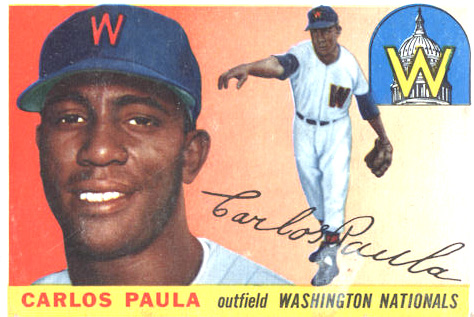I am looking at the single season Wins Above Replacement (Using the Baseball-Reference way to calculate) leader(s) for the Twins and making a list of them, starting with the players who led the Twins in single season WAR more times and ending with the players who led the team in single season WAR only one season. The listings within the groups are alphabetical. I am also using the following designations to clarify a few points:
* = baseball hall of fame member
italics = Twins' hall of fame member
underline = number retired by the Twins
# = active player
bold - highest WAR by a Twins' player
Here is the list:
4 Times:
#Joe Mauer: (2006: 7.0; 2008 8.7; 2009: 7.5; 2010: 5.9)
3 Times:
*Rod Carew: (1975: 8.2; 1976: 7.2; 1977: 10.9)
*Harmon Killebrew: (1961: 5.5; 1967: 7.1; 1969: 6.1)
Chuck Knoblauch: (1995: 6.5; 1996: 8,8; 1997: 6.4)
*Kirby Puckett: (1988: 7.2; 1989: 4.3; 1992: 6.7)
Brad Radke: (1997: 4.7; 1998: 5.7; 1999: 5.5)
#Johan Santana: (2004: 7.5; 2005: 6.3; 2007: 4.9)
2 Times:
Bob Allison: (1963: 7.5; 1964: 6.2)
*Bert Blyleven: (1973: 9.2; 1974: 7.2)
Doug Corbett: (1980: 5.9, 1981: 2.5)
Kent Hrbek: (1984: 5.4; 1985: 2.5)
Kevin Tapani: (1991: 2.8; 1993: 2.8)
Tony Oliva: (1966: 6.6; 1970: 7.4)
1 Time:
#Scott Baker: (2011: 3.9)
Tom Brunanksy: (1982: 5.0)
John Castino: (1983: 4.0)
Gary Gaetti: (1986: 5.3)
Greg Gagne: (1990: 2.8)
Dave Goltz: (1978: 6.1)
Jacque Jones: (2002: 4.9)
Corey Koskie: (2003: 4.7)
Jerry Koosman: (1979: 6.5)
Shane Mack: (1994: 4.0)
Joe Mays: (2001: 5.9)
Camilo Pascual: (1962: 5.7)
César Tovar: (1968: 4.4)
Zoilo Versalles: (1965: 7.6)
Frank Viola: (1987: 7.6)
And a couple of comments:
- The more I look into these type of historic lists, the more I am impressed by the way Joe Mauer looks among Hall of Fame caliber past players
- Retiring numbers and Twins' HOF elections are very subjective. Case in point: Chuck Knoblauch, whose position in this list shows that he deserves to be at least in the Twins' HOF. On the other hand the way he left, does not bode well... I wonder how the Twins' brass will view Johan Santana 5-10 years from now
I'd love your thoughts on this






